2023 Civil War Travelogues — SVBF National Meeting, Winchester
Welcome to my 2023 travelogue pages. This is my report of my visit to Winchester, Virginia, for the national conference of the Shenandoah Valley Battlefield Foundation. It was my fourth of these annual events, the past few years interrupted by Covid. To see the entire list of my 2023 trips, go here.
| Here is a reminder about the reason I write these pages the way I do. They record my experiences and impressions of Civil War trips primarily for my future use. Thus, they sometimes make assumptions about things I already know and focus on insights that I receive. They are not general-purpose descriptions for people unfamiliar with the Civil War, although I sometimes link to various Wikipedia articles throughout. Apologies about the quality of interior photographs—I don't take fancy cameras with big flashes to these events. If you would like to be notified of new travelogues, connect to me via Facebook. |
Thursday, April 20
I flew United Airlines direct to Dulles and took an Uber to the George Washington hotel in downtown Winchester. Why Uber? It is because rental cars are now over $100 a day and I was not going to be using the car in Winchester anyway, besides paying to park it. The fare from Dallas to Winchester was about $100 plus tip. The hotel is a Grand Wyndam and is very comfortable, plus ideally located for walking in downtown Winchester. Somewhat uncharacteristically for small-town Virginia, the hotel restaurant is a Pizzeria Uno.
I arrived in Winchester about 6:30 PM, which meant that I missed some of the initial afternoon activities, including the dedication of a map room at the Winchester visitor center and the dedication of the Ohio monument on the Third Winchester battlefield. (I did not feel like flying out the day before just for those two afternoon activities.) I joined the group at the Museum of the Shenandoah Valley downtown on Loudon Street pedestrian mall, which has gone through a tremendous renovation and re-branding since I last saw it. It has a modest collection of artifacts and signage, but I was most impressed at how many instances of maps that I drew for the battlefield foundation are on display.
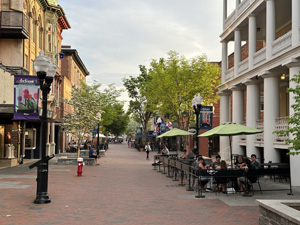
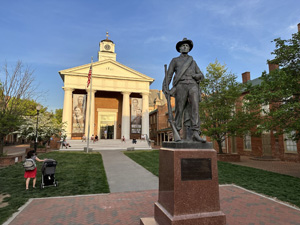
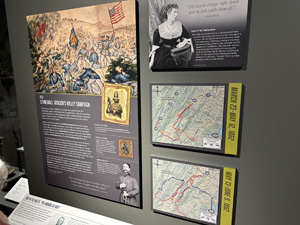
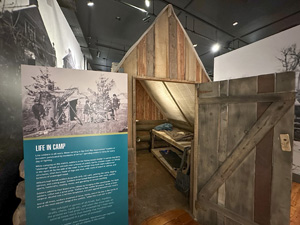
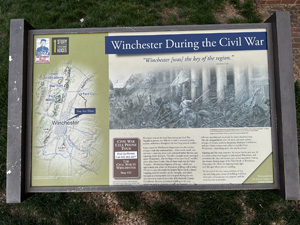
From there we began a downtown walking tour, led by Mike Robinson, the auther of Winchester Tales, and I stuck with it about a half an hour before getting hungry and bailing out for a quick dinner. While I was with the tour, I saw the country’s oldest drugstore (now a restaurant) that had an upstairs photo studio in which one of the only two photos of Stonewall Jackson was taken. We stopped outside the Taylor Hotel, which has been completely renovated since my last visit, and also the house in which George S. Patton Jr’s grandfather died after the Third Battle of Winchester. The downtown is delightfully quaint with lots of attractive restaurants and a number of talented buskers performed.
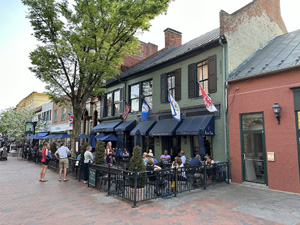
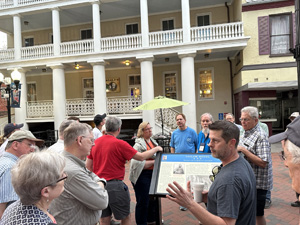
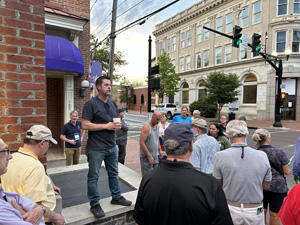
Friday, April 21
We spent the day in the hotel ballroom hearing a variety of interesting lectures. Really crammed in—about 150 attendees.
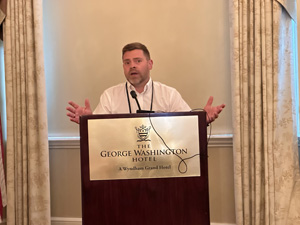
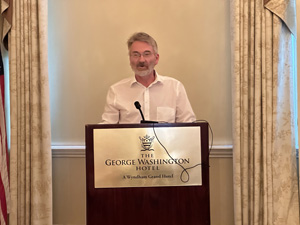
Jonathan A. Noyalas – "Considering the Uncertainty of War and the Certainty of Slavery": Milroy, Emancipation, and Freedom's Uncertainty after the Second Battle of Winchester. I have seen Jonathan a number of times (and drawn maps for some of his books) and I’m always impressed with his presentations. This talk was about the timing of the Emancipation Proclamation and why that was controversial within some of the Union Army. He said that Robert Milroy, the commander at Winchester in 1863, was quite religious, very similar to Stonewall Jackson. He mentioned that the house belonging to Senator James Mason, the author of the 1850 Fugitive Slave Act, was demolished by Milroy and that some of the debris was used to create Star Fort. He described how Milroy's army assisted local slaves in achieving freedom from their masters and how some of them were employed as intelligence agents. Some of the freedmen immigrated north, while others who stayed were unfortunately captured at the battle that year.
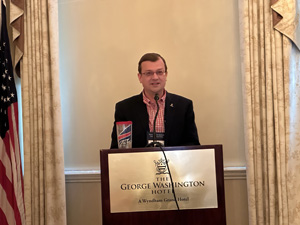
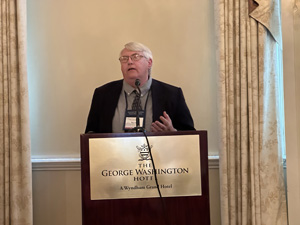
Scott Mingus – “Swallowed Up”: Federal Decision Making and Second Winchester. Scott is also one of my mapping clients and he made good use of my maps for the Second Battle of Winchester in his presentation. It was billed as a discussion of command choices, but was essentially a rather detailed overview of the battle action. Excellent presentation.
During the break, Keven Walker, the CEO of the battlefield foundation, announced a fundraising opportunity for land in New Market, Virginia. My old friend Childs Burden from Middleburg said he would match donations made that morning, and they set up a text-to-donate operation that connected to a website with a thermometer projecting up front, showing the amount of donations coming in and the names of the people donating. Within a couple of hours the group in the ballroom had donated almost $29,000, including Childs’s match, which exceeded Kevin’s goal of $25,000. Amazing.
William J. Miller – The Race to Staunton: The Wagon Train of Wounded and the Confederate Hospital System. Bill is the third author for whom I have drawn maps. He went into a lot of detail about the many thousands of wounded Confederate soldiers from the battle of Gettysburg who had to be transported to hospitals, the nearest of which was 175 miles away in Staunton, Virginia. That was also the nearest railroad line terminus that could be used to transport patients farther along to other hospitals. He discussed the railroad situation, described some of the hospitals, and went into detail about the wagon train commanded by John Imboden and how torturous the journey was.
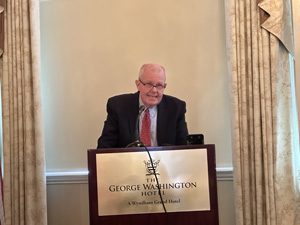
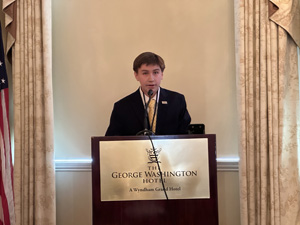
Lunch and talk by Aragon Herrera: The Forgotten State: California in the Shenandoah Valley. Aragon is the 10th grade student who is an intern to the battlefield foundation and he gave an impressively sophisticated talk about California troops who served as four companies of the 2nd Massachusetts Cavalry regiment. They fought in a number of local battles including Third Winchester, Toms Brook, Cedar Creek, and the Appomattox Campaign.
Jeffrey Wm Hunt – Meade and Lee After Gettysburg: The Forgotten Final Stage of the Gettysburg Campaign. I was unfamiliar with Jeffrey’s work, but I was very impressed with his presentation. He addressed the two or so weeks following Lee’s crossing of the Potomac back into Virginia and all of the actions and movements that occurred before the formal end of the Gettysburg campaign on August 1. I had never seen a presentation that described this timeframe, nor have I ever mapped it.
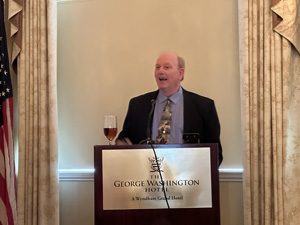
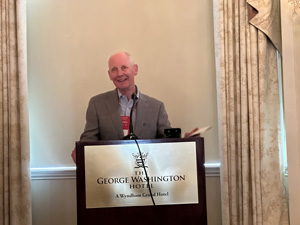
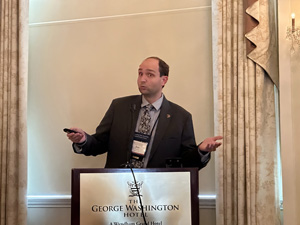
Jon Tracey – “Fit Adornment of the Grounds”: Winchester National Cemetery. Despite my visiting Winchester a number of times, I was never aware that there was a national cemetery within walking distance of the hotel. John, ranger at the Cedar Creek Battlefield, described the history of the cemetery and some of the monuments. (In my experience, it is relatively unusual to have big monuments in addition to normal gravestones, but this one has about a dozen regimental, corps, and state monuments. I believe the reason for this is that the veterans groups did not trust that their monuments would be maintained respectively on this battlefield, so they were moved into the cemetery to be under federal control.) At the conclusion of the afternoon talks, I walked over to the cemetery and it is very pretty. I particularly wanted to see the monument to the 18th Connecticut, the unit one of my ancestors fought in. There’s also a Confederate section, called Stonewall Cemetery, in the civilian cemetery across the street, which I did not have time to visit.
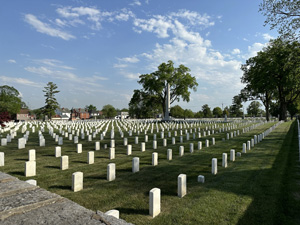
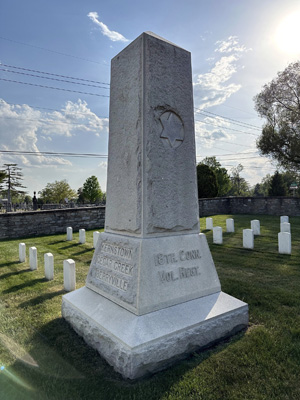
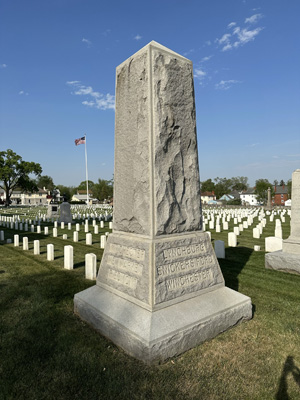
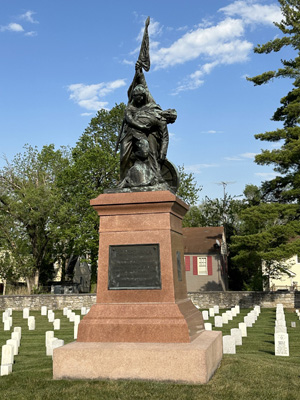
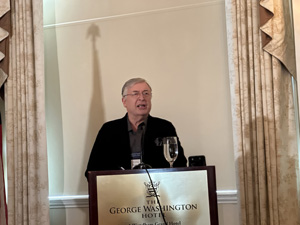 Ronald Maxwell
Ronald Maxwell Ron Maxwell – “Einfuhlen”: A Filmmaker’s Odyssey. Maxwell was the famous producer of the films Gettysburg and Gods and Generals, but also a prominent member of the battlefield preservation community. His talk was a rather philosophical one about the difficulty of portraying historic characters as modern people with modern attitudes, but simply wearing antique costumes. He described this as not looking into a mirror, but stepping through the mirror to enter another world, the past. His talk title refers to work by an 18th century German historian whose name escaped me, who wrote about this problem and supposedly came up with the term. The modern meaning of the German word einfühlen is “to empathize.”
Awards Banquet with Keven Walker. A number of awards were presented and announcements were made after dinner. Keven was quite excited to reveal that recent preservation activities had secured over 500 acres at various Valley battlefields.
Saturday, April 22
Today is all day on the bus, touring sites for the Second Battle of Winchester. There were three buses, hosted by Scott Mingus, Scott Patchan, and Gary Ecelbarger. We all anticipated a big rain storm starting around noon, so kitted up with rain gear. The bus traveled south to Middletown; we didn’t do anything there other than mark the start of Ewell’s march north on the Valley Pike in June 1863. We continued through New Town (now called Stevens City) and eventually reached Kernstown. We walked up to the top of Pritchard's Hill and Scott Mingus described the action on the southern end of town on June 13. Visiting the visitor center shows that they have made a number of improvements since the last time I visited Kernstown. They now have a big library and four artillery pieces that you can visit in a garage-like building.
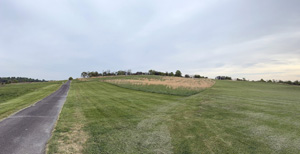
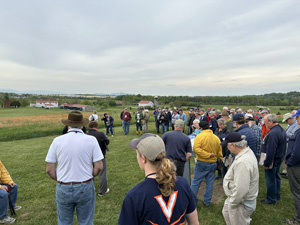
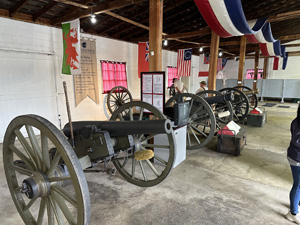
Next we swung around to the northwest, sort of following Jubal Early's flanking movement to attack the West Fort. We parked at a large farm equipment dealer which was like Bobcat heaven. Scott continued his narration with a lot of information about the fabled Louisiana Tigers brigade and we got a blow-by-blow description of the assault against West Fort. It was gratifying to see that everyone was carrying and consulting maps that I had created.
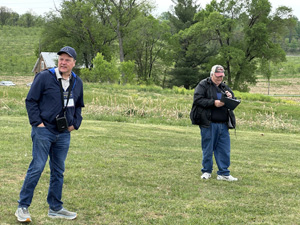

Lunch was scheduled next, but because the rain was fast approaching, they changed the schedule so that we went to Star Fort first. I had been here probably five years earlier and was amazed at how different it looked. The SVBF has done a lot of work removing trees and other excess vegetation so that it looks like a real earthwork fort for now instead of a jungle of plants. There are also two new guns on display representing the Baltimore Battery. General Milroy ordered all of these guns spiked and equipment abandoned as they retreated. They came to regret this the next day and that artillery gear eventually ended up as part of the pre-Pickett’s Charge artillery barrage at Gettysburg.
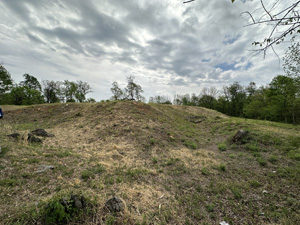
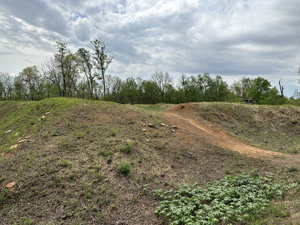
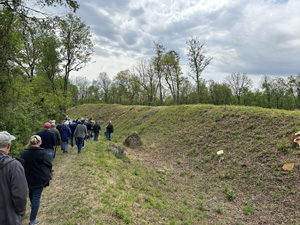
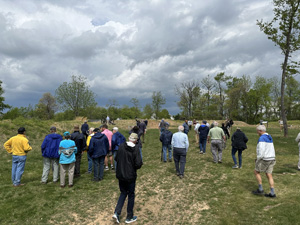
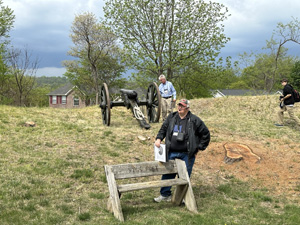
Lunch was at the Golden Corral buffet, not one of my favorite restaurants, but they do have good fried chicken, a big salad bar, and way too many desserts. When we emerged and headed back to the buses, a serious downpour was in progress, so we had a little hope for a successful afternoon. However, the weather gods were smiling at us and by the time we reached our next destination the sun was shining. We stopped at Stephenson’s Depot, where the McCann farm was recently preserved by the SVBF, 153 acres. The engagement here is alternatively known as Carter’s Woods. Scott gave us a detailed account of the Union attacks in the early morning of June 15. I was pleased to hear that the 18th Connecticut played a more gallant role in the action that I had been led to believe—attacking in the dark five or six times before eventually surrendering—so my ancestor can rest in peace a little more comfortably. Keven Walker gave a brief speech about preservation and indicated that they have another 38 acres lined up here in the future, representing the Confederate battle line on the eastern side of the railroad bed. I didn't bother with a photo here because it is simple a giant open, flat field.
We drove back to the hotel and dinner was scheduled at 5 PM. I was invited to a special reception at the nearby museum at 6 PM, so skipped the group dinner, which I was told was going to be meatloaf and fried chicken.
Sunday, April 23
I had an early morning flight from Dulles, and worried about the availability of Uber drivers at 6 AM on a Sunday, I arranged a town car service through a company called Lifters. Excellent service, just a bit more expensive than Uber, but worth it for peace of mind.